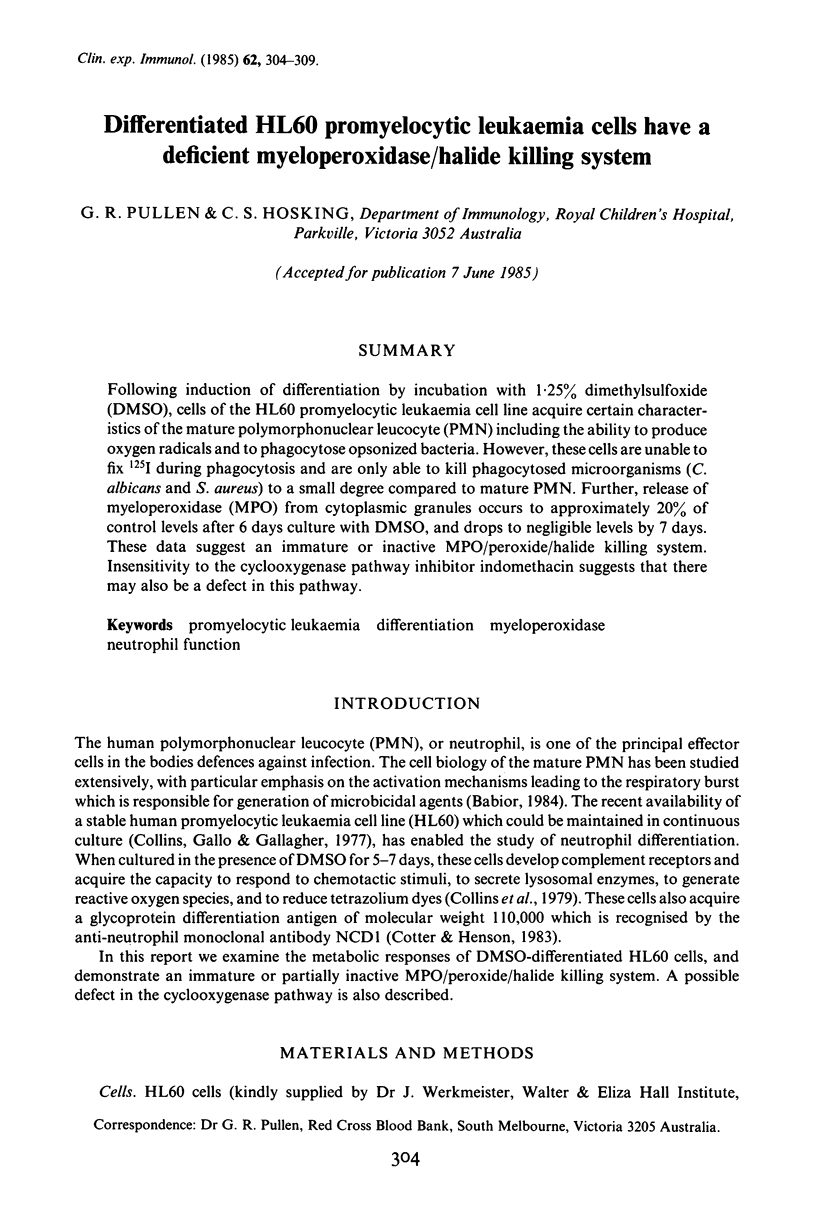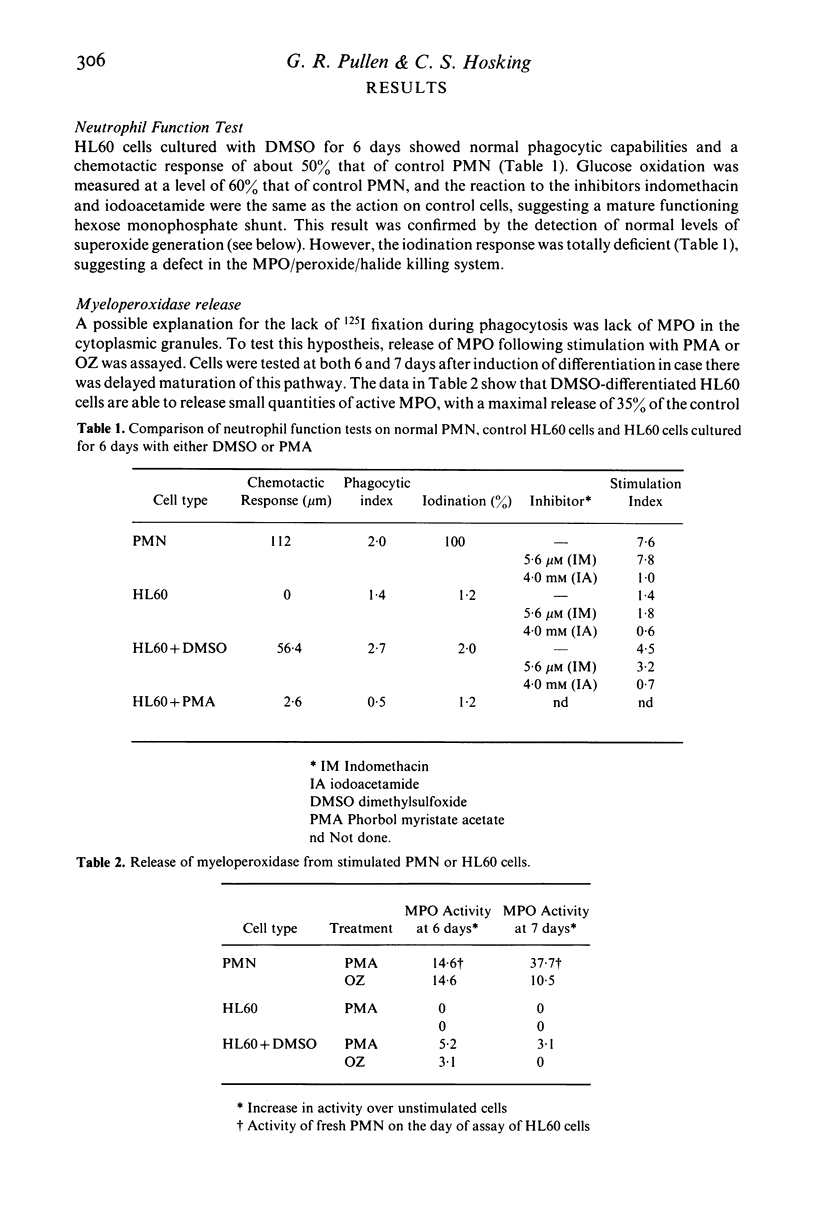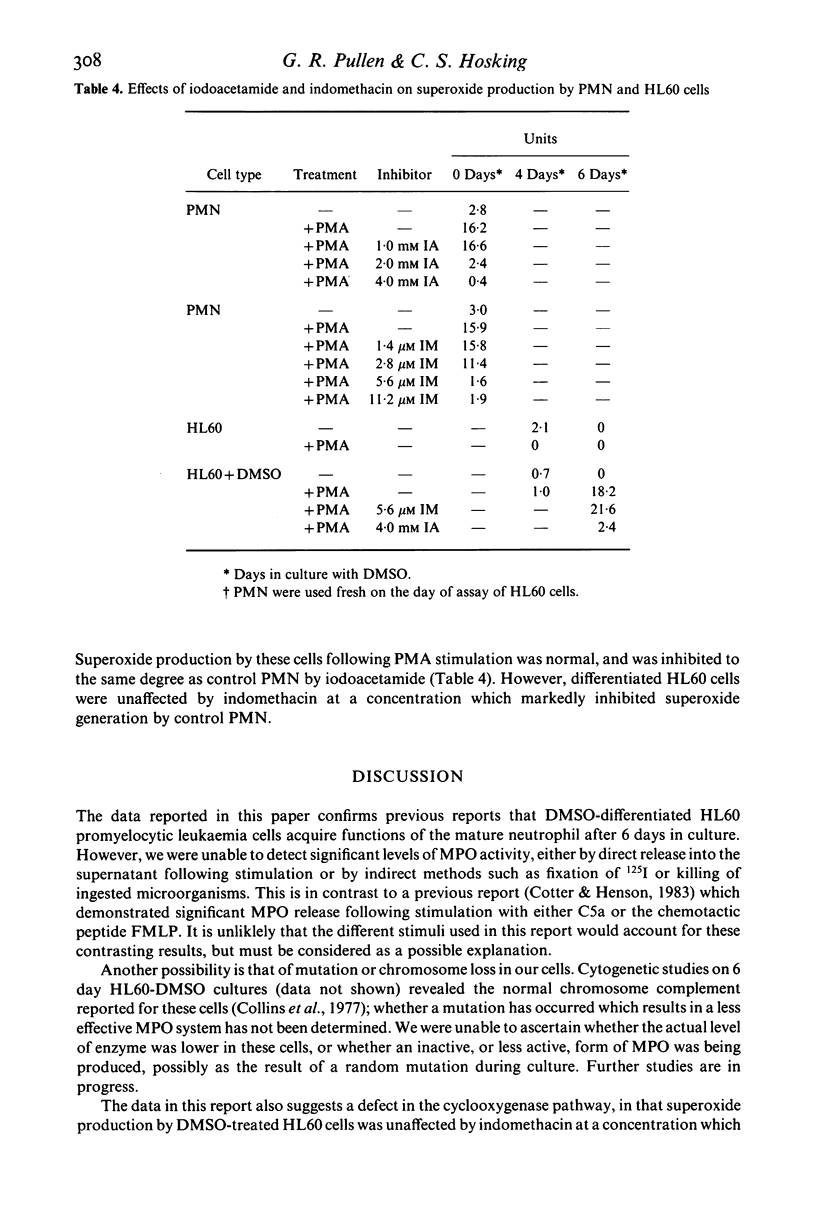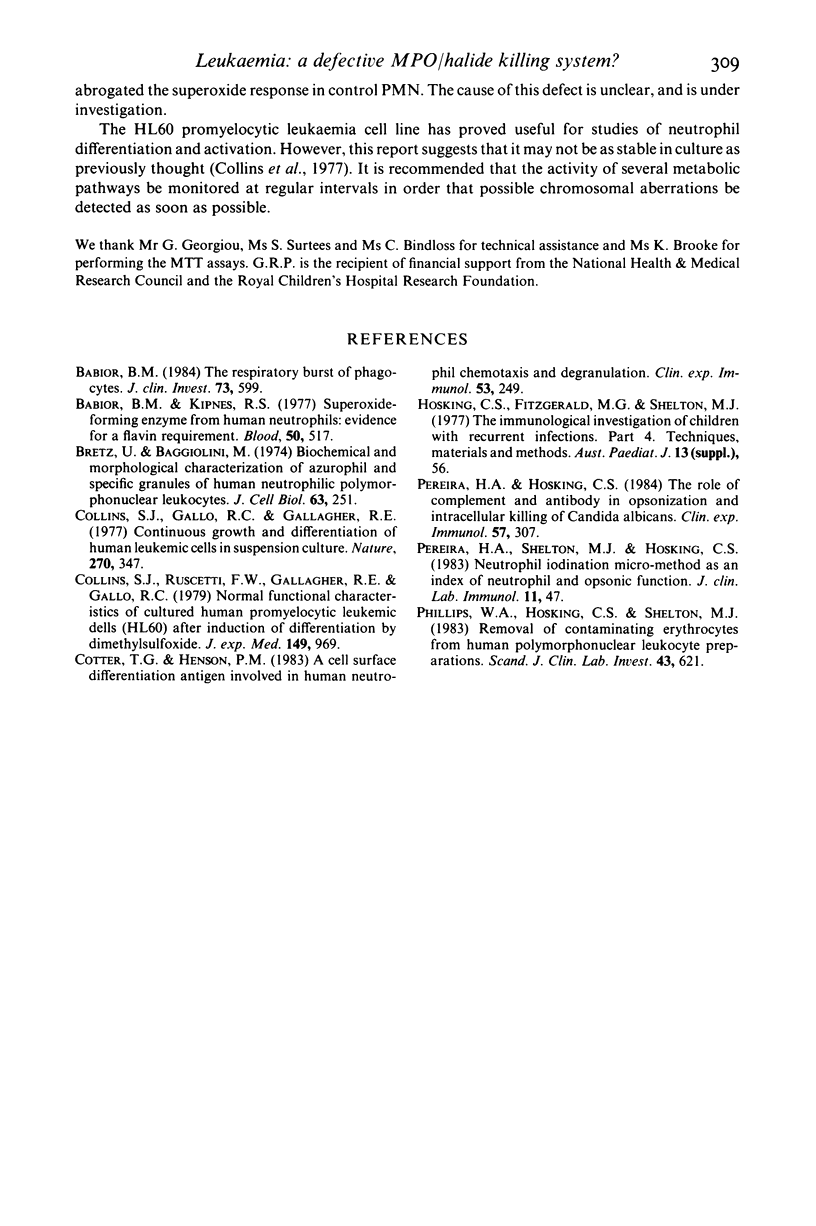Abstract
Following induction of differentiation by incubation with 1.25% dimethylsulfoxide (DMSO), cells of the HL60 promyelocytic leukaemia cell line acquire certain characteristics of the mature polymorphonuclear leucocyte (PMN) including the ability to produce oxygen radicals and to phagocytose opsonized bacteria. However, these cells are unable to fix 125I during phagocytosis and are only able to kill phagocytosed microorganisms (C. albicans and S. aureus) to a small degree compared to mature PMN. Further, release of myeloperoxidase (MPO) from cytoplasmic granules occurs to approximately 20% of control levels after 6 days culture with DMSO, and drops to negligible levels by 7 days. These data suggest an immature or inactive MPO/peroxide/halide killing system. Insensitivity to the cyclooxygenase pathway inhibitor indomethacin suggests that there may also be a defect in this pathway.
Full text
PDF





Selected References
These references are in PubMed. This may not be the complete list of references from this article.
- Babior B. M., Kipnes R. S. Superoxide-forming enzyme from human neutrophils: evidence for a flavin requirement. Blood. 1977 Sep;50(3):517–524. [PubMed] [Google Scholar]
- Babior B. M. The respiratory burst of phagocytes. J Clin Invest. 1984 Mar;73(3):599–601. doi: 10.1172/JCI111249. [DOI] [PMC free article] [PubMed] [Google Scholar]
- Bretz U., Baggiolini M. Biochemical and morphological characterization of azurophil and specific granules of human neutrophilic polymorphonuclear leukocytes. J Cell Biol. 1974 Oct;63(1):251–269. doi: 10.1083/jcb.63.1.251. [DOI] [PMC free article] [PubMed] [Google Scholar]
- Collins S. J., Gallo R. C., Gallagher R. E. Continuous growth and differentiation of human myeloid leukaemic cells in suspension culture. Nature. 1977 Nov 24;270(5635):347–349. doi: 10.1038/270347a0. [DOI] [PubMed] [Google Scholar]
- Collins S. J., Ruscetti F. W., Gallagher R. E., Gallo R. C. Normal functional characteristics of cultured human promyelocytic leukemia cells (HL-60) after induction of differentiation by dimethylsulfoxide. J Exp Med. 1979 Apr 1;149(4):969–974. doi: 10.1084/jem.149.4.969. [DOI] [PMC free article] [PubMed] [Google Scholar]
- Cotter T. G., Henson P. M. A cell surface differentiation antigen involved in human neutrophil chemotaxis and degranulation. Clin Exp Immunol. 1983 Jul;53(1):249–253. [PMC free article] [PubMed] [Google Scholar]
- Pereira H. A., Hosking C. S. The role of complement and antibody in opsonization and intracellular killing of Candida albicans. Clin Exp Immunol. 1984 Aug;57(2):307–314. [PMC free article] [PubMed] [Google Scholar]
- Pereira H. A., Shelton M. J., Hosking C. S. Neutrophil iodination micro-method as an index of neutrophil and opsonic function. J Clin Lab Immunol. 1983 May;11(1):47–53. [PubMed] [Google Scholar]
- Phillips W. A., Hosking C. S., Shelton M. J. Removal of contaminating erythrocytes from human polymorphonuclear leucocyte preparations. Scand J Clin Lab Invest. 1983 Nov;43(7):621–627. [PubMed] [Google Scholar]


